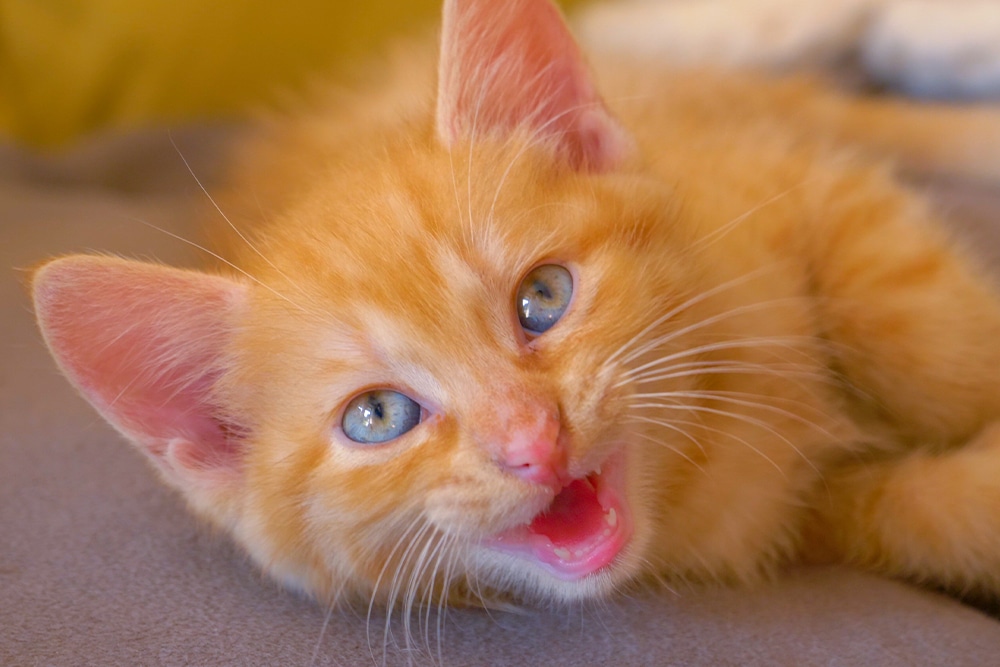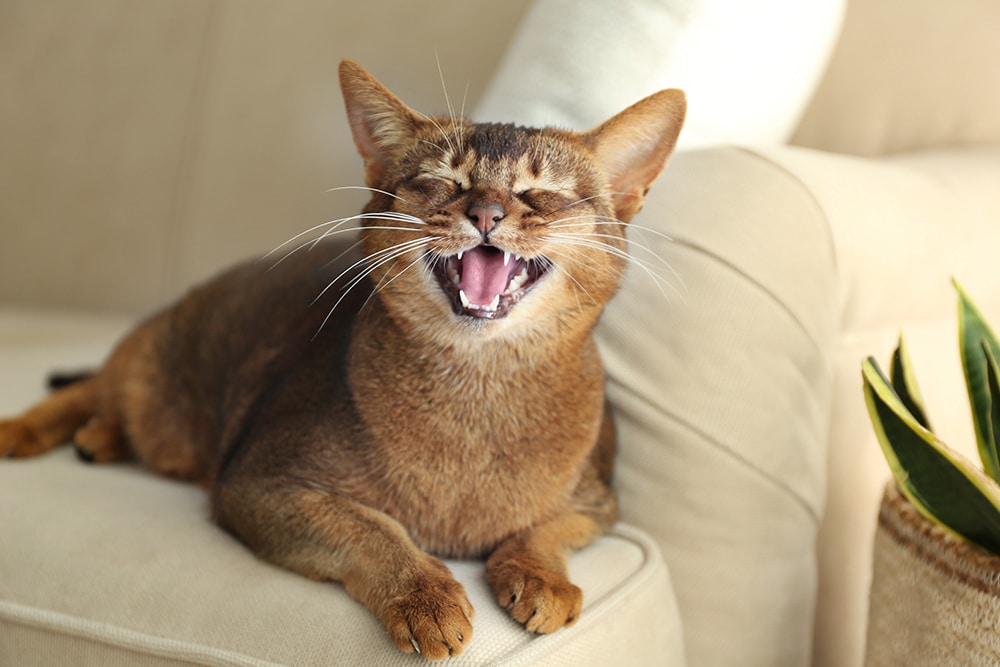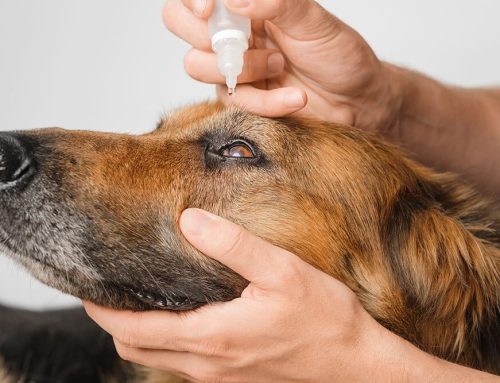Have you been padding bleary-eyed into the kitchen at 2 a.m. because your cat simply won’t stop calling for you? At Northwood Veterinary Hospital in Northwood, New Hampshire, we hear this concern every week. We live and work with cats ourselves, and we know how frustrating it can be to decode nonstop vocalizations while worrying something serious might be hiding beneath the noise.
Why Cats Speak Up in the First Place
Meowing is a learned language—kittens use it with their mothers, and adult cats quickly discover it gets humans moving. A brief “mrrp” at the food bowl or a soft trill at the door is normal social chatter. We start calling it “excessive” when the frequency, volume, or insistence noticeably rises above your cat’s baseline. Recognizing that change early is key: it can be a behavioral habit, a red flag for illness, or a mixture of both.
Medical Reasons You Might Hear More Meows
Our first job as veterinarians is ruling out pain and disease. These are the most common medical drivers we see:
Thyroid disease
Overactive thyroid glands accelerate metabolism, creating a restless, hungry, heat-seeking, and very vocal cat. Treatment choices—from diet to medication or radio-iodine therapy—are summarized in the Feline Hyperthyroidism Guidelines – AAHA.
High blood pressure or eye disease
Hypertension can cause headaches and vision changes that make cats cry out, especially at night when the house is quiet.
Pain in joints, teeth, or abdomen
Because felines hide discomfort well, the only outward clue may be an uptick in vocalization. Compare your pet’s behavior to the checklist in What’s Wrong? Common Pet Pain Signs.
Cognitive dysfunction
Senior cats sometimes pace and yowl when they feel disoriented—very similar to dementia in people. Colorado State University outlines early warning signs in Signs of Cognitive Decline in Older Pets.
Neurologic conditions
Brain tumors, infections, or trauma may change the way a cat processes sounds and sights, triggering unexpected meows. Diagnostic imaging details can be found in Brain Tumors in Small Animals – NC State Veterinary Hospital.
When we examine a chatty patient, we start with a thorough physical, run baseline bloodwork, and measure blood pressure. Advanced imaging or specialist referral follows only if initial tests point in that direction.
Behavioral and Environmental Triggers
If the lab results look perfect, behavior comes under the microscope. Our favorite questions to ask:
- Has the routine or household changed (new baby, job schedule, roommates)?
- Does the cat calm down when you engage, feed, or open a particular door or window?
- Are there multiple cats sparring over territory?
These scenarios often lie at the root:
Attention-seeking habits
Cats are master trainers. If they learn that a loud meow earns a treat or cuddle, they will repeat the behavior. AAHA’s guide, How Can I Fix My Cat’s Behavior Problems?, explains reward-based retraining that does not damage the human-animal bond.
Inter-cat tension
A new feline housemate—or even a straying neighborhood cat seen through the window—can prompt agitated vocal standoffs. Strategies to smooth multi-cat friction are covered in Addressing Tension Among Cats.
Boredom and unmet hunting instincts
Indoor cats that lack climbing space or hunting outlets often sing for something to do. The Indoor Pet Initiative – Cat Environment provides room-by-room ideas for turning your home into an engaging territory.
Age-related changes
Older cats can grow clingier, lose hearing, or suffer nighttime confusion, all of which raise the decibel level. The ASPCA discusses typical senior behavior shifts in Older Cats Behavior Problems.
Misinterpreted communication
Not every meow is a complaint. A low rumble or short chirp can signal contentment, as outlined in The Secret Feline Language: 5 Reasons Why Your Cat Purrs. Learning the difference helps owners respond appropriately.
For a broader look at normal versus problematic behaviors, see the ASPCA’s resource on Common Cat Behavior Issues.
Why Prompt Action Matters
Left unchecked, excessive vocalization can fray the relationship you share with your pet and increase stress hormones that make underlying medical conditions worse. In multi-cat homes, one vocal cat can ignite anxiety in companions, escalating conflicts and possible injuries. Early intervention tends to be simpler, cheaper, and more successful.
Diagnosing the Cause at Our Hospital
When you schedule a visit with us, here is what typically happens:
- History and behavior profile – We encourage you to bring a short video of the meowing episodes and a list of changes in the home.
- Full physical and oral exam – Identifies arthritis, dental pain, or abdominal discomfort.
- Bloodwork and urinalysis – Screens thyroid, kidney, and metabolic markers.
- Blood pressure and ophthalmic check – Rules out hypertension-related discomfort.
- Imaging (X-ray, ultrasound, MRI/CT) – Ordered if we suspect neurologic or abdominal disease.
With results in hand, we draft a treatment plan tailored to your cat’s age, health, and environment.
When Is It an Emergency?
While most chatty episodes can wait for a routine appointment, we advise urgent care if you notice:
- Sudden loud crying paired with open-mouth breathing or collapse
- Unrelenting yowling plus straining in the litter box (possible urinary blockage)
- Vocalization with hind-leg weakness, head tilt, or seizures
These signs may indicate life-threatening conditions such as arterial thromboembolism, urinary obstruction, or acute neurologic events and should be assessed immediately.
At-Home Tips to Turn Down the Volume
Small, consistent adjustments often yield the biggest benefit:
- Feed on a fixed schedule with automatic timed feeders rather than free-choice grazing. Predictability reduces begging. The cat associates the feeder as the giver of food- not you.
- Ignore demand meows, reward silence. Wait for a quiet pause, then give attention or a treat—classical operant conditioning in action.
- Enrich the territory. Rotate food puzzles, paper bags, and high perches. The project ideas in DIY Enrichment Toys for Your Cat are budget-friendly and vet-approved.
- Use pheromone diffusers or calming supplements during stressful events (home renovation, holiday guests).
- Create “safe zones.” Vertical spaces or closed rooms let timid cats avoid conflicts and reduce vocal protest.
- Schedule interactive play twice daily. A 10-minute wand session satisfies hunting instincts better than any background TV.

Frequently Asked Questions
Is louder meowing simply part of aging?
Some rise in vocalization is common, but any sudden spike warrants a checkup to rule out pain, hypertension, or cognitive decline.
Will spaying or neutering quiet my cat?
Reproductive hormones certainly fuel howling in intact cats, especially during mating seasons. Sterilization often reduces—but doesn’t always eliminate—excess noise.
Should I try over-the-counter calming treats?
Nutraceuticals can help mild anxiety, but they are not substitutes for a medical exam. Combine them with environmental and behavioral changes for best results.
Can I train a Siamese or Bengal to be quiet?
Vocal breeds have a genetic tendency to “talk.” You may not silence them entirely, but structured play, puzzle feeders, and consistent responses prevent most late-night concerts.
Walking the Journey With You
Every cat and household is unique, so we build personalized plans that respect both feline instincts and human sleep schedules. You can browse our full range of services or reach out through our contact page to set up an appointment.
Together, we can translate those chatty meows into information that keeps your cat comfortable—and your household peaceful—for years to come.







Leave A Comment